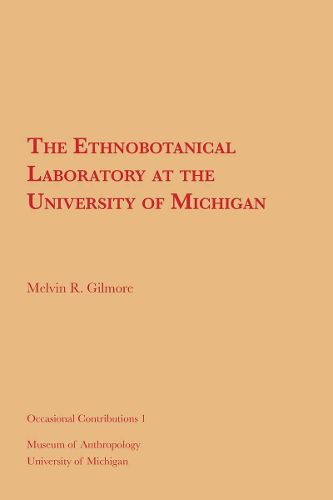Readings Newsletter
Become a Readings Member to make your shopping experience even easier.
Sign in or sign up for free!
You’re not far away from qualifying for FREE standard shipping within Australia
You’ve qualified for FREE standard shipping within Australia
The cart is loading…






In 1932, with this slim but important volume, the University of Michigan Museum of Anthropology began its publication series. Melvin R. Gilmore, a preeminent ethnobotanist, joined the Museum as its first curator of ethnology in 1929 and in 1930 established the Ethnobotanical Laboratory: the largest such collection in North America. He became director of the laboratory in 1938. In this volume, he discusses the establishment of the laboratory and the importance of ethnobotanical research. Nearly a century later, the Ethnobotanical Laboratory is still unique for its extensive collection of archaeological and systematic comparative wood, seeds, and plant parts from around the world, and for its ethnographic examples of how traditional cultures collect, store, process, and use these plants.
$9.00 standard shipping within Australia
FREE standard shipping within Australia for orders over $100.00
Express & International shipping calculated at checkout
In 1932, with this slim but important volume, the University of Michigan Museum of Anthropology began its publication series. Melvin R. Gilmore, a preeminent ethnobotanist, joined the Museum as its first curator of ethnology in 1929 and in 1930 established the Ethnobotanical Laboratory: the largest such collection in North America. He became director of the laboratory in 1938. In this volume, he discusses the establishment of the laboratory and the importance of ethnobotanical research. Nearly a century later, the Ethnobotanical Laboratory is still unique for its extensive collection of archaeological and systematic comparative wood, seeds, and plant parts from around the world, and for its ethnographic examples of how traditional cultures collect, store, process, and use these plants.